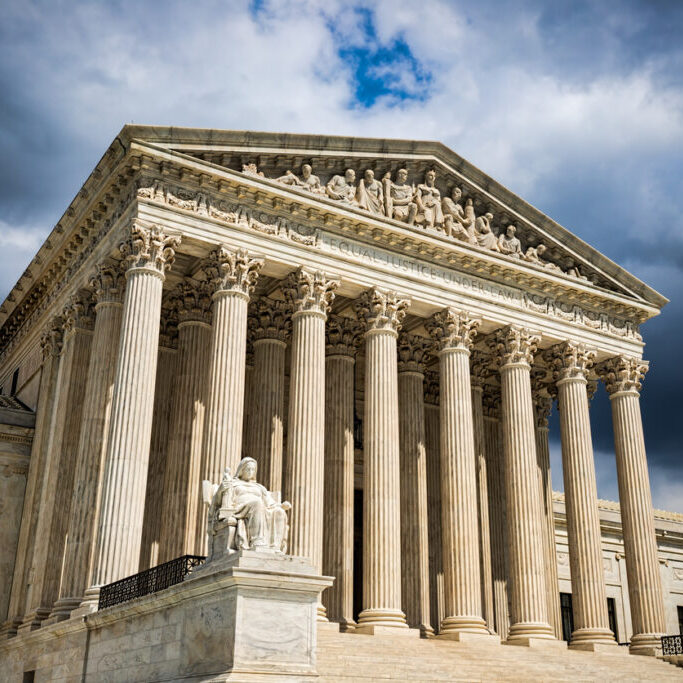Insights < BACK TO ALL INSIGHTS
True Threats and True Agendas
True Threats and True Agendas
By: James Trusty
Last week’s Supreme Court opinion on the “true threats” doctrine seemingly settles a long- brewing issue in threat-based prosecutions but also reflects the anticipatory positioning of various Associate Justices on much hotter issues that may make their way to SCOTUS consideration in the near future. As such, the debate-behind-the-debate between the Court’s members is of great interest to those who like predicting the next big rulings coming down from on high.
In Counterman v. Colorado, 600 U.S., (2023) the Court settled a fundamental First Amendment issue implicated in the prosecution of threatening communications. A country singer residing in Colorado had been the subject of a stream of unwanted Facebook messages, spanning three years. Many of the messages were clumsy and essentially harmless, but a few appeared to cross over into either reflecting surveillance of the victim or threatening harm.1 At trial, the state obtained its convictions for threats and stalking based entirely on Counterman’s stream of unwanted messages.
Colorado courts had previously ruled that for communications to fall outside of the free speech protection of the First Amendment, the comments would have to be considered as threats by a reasonable person, i.e., an objective standard. The trial court followed that precedent. Other case law had focused on the subjective intent of the author. See, e.g., Virginia v. Black, 538 U.S. 343, 359 (2003) (holding that true threats are “serious expression[s] conveying that a speaker means to “commit an act of unlawful violence.”). The Supreme Court, then, felt the need to finally clarify precisely what it means when it pointed out that “True threats of violence are outside the bounds of First Amendment protection and punishable as crimes.”2 In doing so, the Court would put to rest a long-simmering issue about objective vs. subjective in this context—one I mentioned over six years ago in “When a Threat Becomes a Crime.”3
The majority opinion, authored by Kagan and joined by Roberts, Alito, Kavanaugh and Jackson, ruled that threats must include a criminal mens rea to be unprotected speech, although that proven mental state need not rise to the level of willfulness or specific intent. Indeed, the majority concluded that recklessness was a sufficient state of mind to support a true threat prosecution. Interestingly, the Court acknowledged that imposing a subjective standard will always be more difficult to successfully prosecute than an objective one, stating, “[s]uch a requirement comes at a cost: It will shield some otherwise proscribable (here, threatening) speech because the State cannot prove what the defendant thought.”4
This then leads to the debate-within-the-debate, or at least signs of the seemingly unrelated battles forming up on the horizon. Justice Kagan and the majority justify their mens rea imposition by turning to other areas of unprotected speech, specifically incitement and defamation. In citing the “actual malice” standard of New York Times v. Sullivan, 376 U.S. 254 (1964), is the majority underscoring their view that stare decisis will weigh heavily if anyone were to take on that case’s highly restrictive view of when public figures can successfully pursue defamation claims? Justice Barrett’s dissent accuses the majority of “cherry pick[ing]”5 part of Sullivan to needlessly contract recourse for harassment victims, and her partner in dissent, Justice Thomas, took the time to add his own dissent to again call for revisiting of Sullivan, dismissively calling the majority’s opinion and reliance upon Sullivan a “policy-driven decision[] masquerading as constitutional law.”6 Is the Court anticipating that a defamation case involving former President Trump might wind its way to the Court? If so, the majority might be using Counterman for the additional, if subtle, message that it was not inclined to revisit Sullivan’s reasoning and impact, roughly 60 years after it became the law of the land.
Similarly, the majority turns to incitement cases in support of a subjective standard in threats prosecutions. Here, the parallel draws less fire from the dissent, as the notion that incitement prosecutions require proof of a specific intent to produce imminent disorder7 is less controversial (as well as less dispositive) as to the issue at hand. But it is of some interest that incitement precedent is even in the mix, as Special Counsel Jack Smith continues to lead a criminal investigation relating to the events of January 6, and where many pundits point to relatively unused insurrection and incitement statutes as being used to target the former president.
Refining and restricting threats prosecutions in the way that the Supreme Court did this week will have an interesting practical effect—ambiguous or mentally imbalanced phrasing that nonetheless has a disturbing impact on the recipient increasingly will fall into the category of protected speech when it comes to prosecutorial charging decisions, as well as to the jury instructions provided by trial courts. The frequent white collar case battleground of subjective intent will now spill into federal and state threats prosecutions, where implausible or grandiose threats may be recategorized as unfortunate, but free, speech.
1 For example, “Staying in cyber life is going to kill you,” and “You’re not being good for human relations. Die.”
Counterman v. Colorado, No. 22-138, 2023 WL 4187751, at *2 (U.S. June 27, 2023)
2 Id.
3 James Trusty, When a Threat Becomes a Crime, IFRAH LAW (Mar. 2, 2017), https://www.ifrahlaw.com/crime-in-the- suites/threat-becomes-crime/.
4 Counterman, 2023 WL 4187751, at *4.
5 Id. at *21 (Barret, J., dissenting).
6 Id. at *19 (Thomas, J., dissenting).
7 Hess v. Indiana, 414 U.S. 105, 109 (1973) (per curiam); Brandenburg v. Ohio, 395 U.S. 446 (1969).





